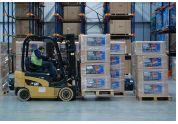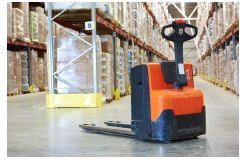Many workers are injured and killed each year while working in confined spaces. An estimated 60% of the fatalities have been among the would-be rescuers. A confined space can be more hazardous than regular workspaces for many reasons. To effectively control the risks associated with working in a confined space, a confined space hazard assessment and control program should be implemented for your workplace. Before putting together this program, make sure to review the specific regulations that apply to your workplace.
Sometimes oversights happen because workers don’t know the rules. Other times it’s when they choose shortcuts. In either case, our Loss Control Services team has determined that serious accidents can often be traced to one or more key breakdowns in duties, and they offer the following “Five Tips for Safety in Confined Spaces.”
1. Monitor the confined space prior to and during entry.
The OSHA’s confined space standard reads: “Test conditions in the permit space to determine if acceptable entry conditions exist before entry is authorized to begin …” And states: “Test or monitor the permit space as necessary to determine if acceptable entry conditions are being maintained during the course of entry operations …”
Simply stated, knowing the atmospheric conditions inside a confined space can mean the difference between life and death. Employees shouldn’t enter until they’re aware of the hazards present on the inside. Hazards include exposure to a toxic, oxygen-deficient/enriched, or flammable atmosphere.
Upon entry, it is important to continue to monitor the space because atmospheric conditions can change quickly. Ideally, you will want a monitor with an alarm capable of warning employees entering the confined space.
2. Remove hazards from the confined space.
The entry permit that documents compliance with Standard 1910.146 and authorizes entry to a permit-required space shall identify: “the measures used to isolate the permit space and to eliminate or control permit space hazards before entry. Those measures can include the lockout or tagging of equipment, and the procedures for purging, ventilating, and flushing permit spaces.”
Before anyone enters a confined space, they must take steps to:
- Lock out energy hazards.
- Double block and bleed lines that run into the space.
- Ventilate the confined space if it contains a hazardous atmosphere.
- Remove engulfment hazards.
3. Account for any hazards brought into the confined space
The OSHA’s Standard states: “Verifying that conditions in the permit space are acceptable for entry throughout the duration of an authorized entry.”
Workers generally enter confined spaces out of a need to perform a task inside. This work often requires workers to carry tools into the space. Before doing so, you must consider what type of work is being performed to make sure that it will not create an unsafe environment.
For example, welding tools and other spark-producing equipment should not be used in oxygen-rich environments or atmospheres above the lower explosive limit (LEL). Welding materials can also produce deadly carbon monoxide. Ventilation may be used and monitoring may be needed to ensure safety during these activities.
4. Have trained rescue personnel onsite and standing by.
As indicated in OSHA’s Standard: “Select a rescue team or service from those evaluated that: Has the capability to reach the victim within a time frame that is appropriate for the permit-required space hazard identified; is equipped for and proficient in performing the needed rescue services; inform each rescue team or service of the hazards they may confront when called on to perform a rescue at the site; and provide the rescue team or service selected with access to all permit spaces from which rescue may be necessary, so that the rescue service can develop appropriate rescue plans and practice rescue operations.”
Only rescue-trained personnel may enter a confined space to perform a rescue. More than 50% of confined-space entry fatalities involve the rescuer. That’s why it’s so critical to prohibit entry of non-rescue-trained personnel into confined spaces.
Reliance on an outside party for rescue is a factor in an alarming number of confined-space fatalities. Typically, rescuers are members of the local fire department. Unfortunately, they’re not always told that an entry is going to take place. It’s even possible that these responders aren’t aware they’ve been assigned as the rescue team in the first place.
Survival for a worker who enters an oxygen-deficient or toxic atmosphere is dependent upon immediate rescue. Calling the outside party and notifying them once the entrant is in danger usually means one of two things:
- An untrained co-worker enters the confined space in an attempt to rescue the entrant. This often results in a second fatality.
- It’s important to work with the rescue personnel prior to entry. Rescuers need to, familiarize themselves with the space and determine the rescue equipment they may need in case of an emergency.
5. Use a mechanical means of rescue.
The OSHA’s Standard says: “To facilitate non-entry rescue, retrieval systems or methods shall be used whenever an authorized entrant enters a permit space unless the retrieval equipment would increase the overall risk of entry or would not contribute to the rescue of the entrant.”
When possible, the use of a tripod and hoist enables rescuers to remove the worker from outside the confined space without endangering the rescue team or others. Another key advantage is that rescue can be performed immediately after a hazard is recognized, and with the response team standing by, it increases the chances of a successful rescue.
Finally, be Prepared for the worst.
When dealing with confined-space entry, we encourage you to err on the side of caution. Even minor confined-space emergencies require prompt and effective action. However, if training and execution are inadequate, even a minor emergency could turn into a fatal incident.
Download Now for FREE!!
Available only for all registered Users, does not require any payment to download.
| Title | |||
|---|---|---|---|
|
Mechanical power transmission apparatus 1 513 downloads |
Checklist, Free Files | October 21, 2022 | Please login to download |
|
Machine guarding 1 513 downloads |
Checklist, Free Files | October 21, 2022 | Please login to download |
|
HEALTH AND SAFETY MANUAL 1 13416 downloads |
Free Files, Learning/Training | October 14, 2022 | Please login to download |







